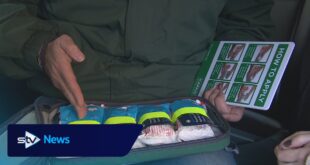SATURDAY PUZZLE — Shiver me timbers, right? That’s what I thought when I skimmed through the entire set of across clues to this grid and came up with a big fat goose egg. An unfilled grid like this one yawns especially widely, because there are 116 open squares (empty boxes that do not touch a black square) and only 21 black squares, or blocks, breaking up the void. This puts Freddie Cheng in rare company; according to Jeff Chen at XWord Info, the quest for the lowest block count in a 15×15 grid is “the most famous, and most controversial, record in Crosswords.”
This is Mr. Cheng’s 13th puzzle for The New York Times and his first Saturday grid. It goes without saying that the geometry in a puzzle like this puts a lot of constraints on its fill, but I think the content in the grid is really terrific overall — well worth the trouble I had actually getting through it.
Tricky Clues
I would have fared better at the beginning if the trivia had been anywhere near to up my alley, but no such luck. I didn’t know SACHA Gervasi, or the WILLA Player story (which is certainly underappreciated online, unless I’m missing a famous reference); I did know that turpentine comes from pines, which are conifers, as is the LARCH (which I did not know). I wrote in a couple of misdirects at the top and the southwest corner — “surer” instead of TRUER and “man” for APE pointed me to “USA maps” instead of ATLASES, all of which slowed me down a bit in that spot. There were some cute puns, too, slow burners for me: SAFE and PH TEST.
1A: If you’re “mathy” (as defined in Mr. Cheng’s notes) then you’ll love this debut entry, which refers to PASCAL’S TRIANGLE. This is a beautiful construction: a triangle that starts with a “1” at a point and follows a simple equation to expand itself outward that helps visually solve an array of problems such as the powers of 2, the Fibonacci sequence and the probability of any combination. The concept was illustrated in China long before Blaise Pascal wrote a treatise that explained the triangle to 17th century Europe.
17A: This entry doubtless resonated with a few solvers who refused to abandon ship for a night and let their subconscious work on this puzzle for a spell (the way I often do — it helps). Even so, I had “naw” instead of NAH at 12D, and for a brief period entertained “too tired to tweet” instead of TOO TIRED TO THINK.
55A: I really love these triple stacks of span entries, and the most pleasing of the bunch to me is EAT DESSERT FIRST. I’m not sure if Jacques Torres is a household name (he might be at this point; I didn’t know he’s on a Netflix show) but he has aromatic chocolate outposts all over New York that are very hard to just walk past.
8D: This is one of a handful of entries that I had to rely completely on crosses to get and will undoubtedly forget immediately. TE DEUMS, laudatory hymns, have been in the Times puzzle before (in plural and singular form) but not since 1998. (I also shrugged at DECILES, which is a debut, and PROSY, which is common in the puzzle but I don’t recall ever hearing in real life.)
24D: Another “mathy” entry and a really evocative statistical term, a FAT TAIL describes an event with large diversions from the mean. Last year it was referenced a few times when describing “superspreader” events in the Covid-19 pandemic, where one infection apparently leads to six or more in a single instance.
36D: I think this is a quite elegant throwback term for a messenger bag. A MUSETTE looks like it can technically come with one strap or two (like a knapsack), but if you want a new one it looks like you’re going to need a beautiful French bicycle to go with it, as well as a basket in which to toss your baguette and bouquet.
Constructor Notes
Finally, a NYT Saturday puzzle I can solve! Good luck to the rest of you poor souls, though …
This puzzle skews slightly mathy (that’s my made-up word) with seed 1A, 22D and my personal favorite, 24D, all of which I hope are recognizable. As the world is rarely just black or white, an understanding of probability and statistics is just so important for making better decisions in our lives.
Many thanks again to the NYT team for improving the cluing as they always do, especially for 42A, 40D and 53D.
Want to Submit Crosswords to The New York Times?
The New York Times Crossword has an open submission system, and you can submit your puzzles online.
For tips on how to get started, read our series, “How to Make a Crossword Puzzle.”
Unsteady?
Subscribers can take a peek at the answer key.
Trying to get back to the puzzle page? Right here.
What did you think?
Source link

